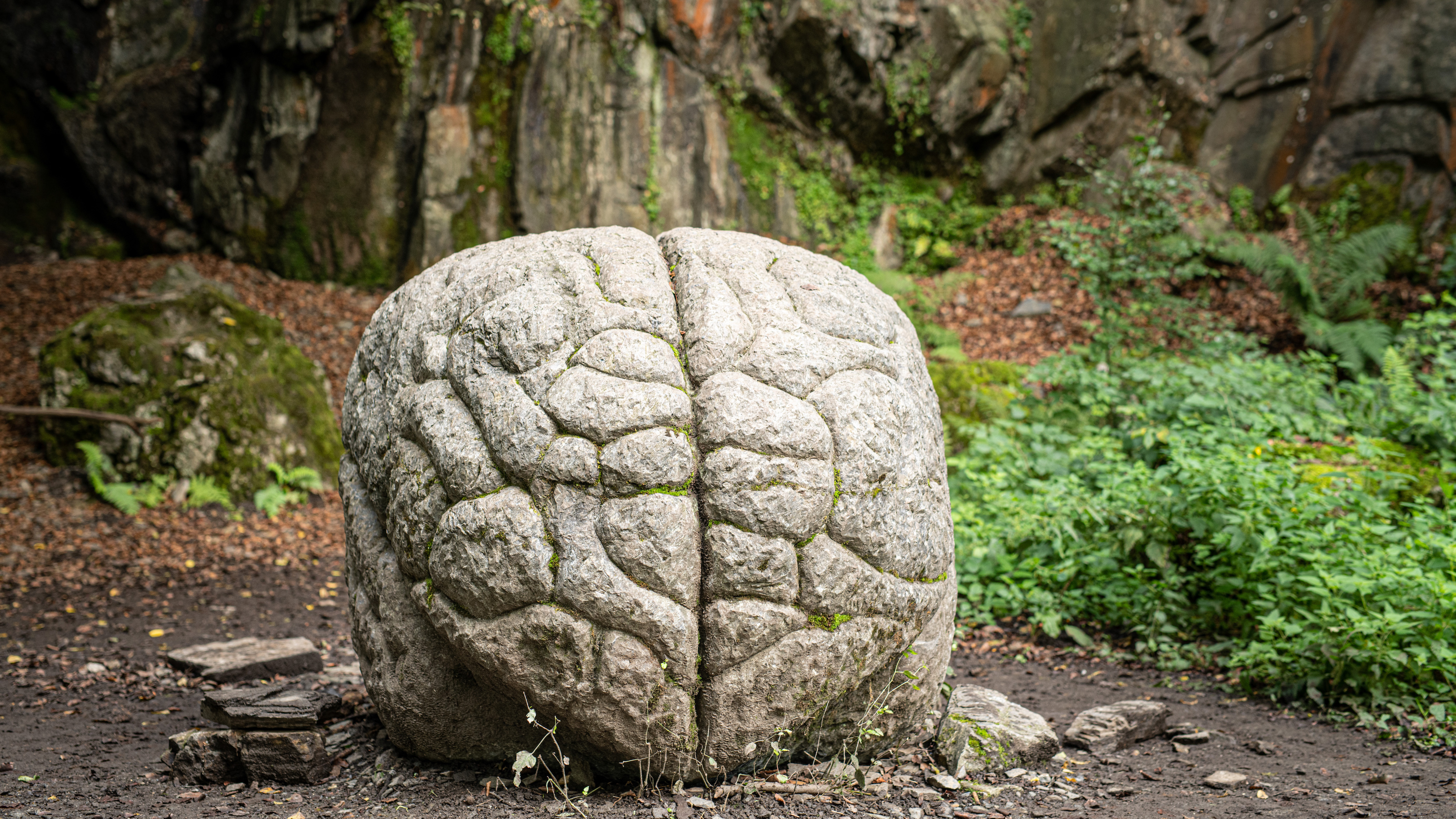If separating conjoined twins results in death, which one should die?

- In what has been described as the most complex surgery of its kind, conjoined twins who were fused at the skull were successfully separated.
- Twins who share brain tissue have been observed also to share sensory experiences, thoughts, and feelings.
- Separation surgeries are fraught with biomedical challenges and ethical dilemmas. In one case, it was known in advance that separation would kill one of the twins.
In early August 2022, news outlets around the world reported that a team of more than 100 medical staff performed a complex operation to separate conjoined twins fused at the skull.
Three-year-old twins Arthur and Bernardo Lima were born in rural north Brazil in 2018, fused at the top of their heads, and sharing vital cerebral blood vessels. The surgical team had spent months practicing the separation procedure using virtual reality mock-ups based on CT and MRI scans of the twins.
Then, in what surgeon Noor ul Owase Jeelani called “space-age stuff,” surgeons at the Instituto Estadual do Cérebro Paulo Niemeyer in Rio de Janeiro performed seven surgeries on the twins, over more than 27 hours of operating time, with the assistance of colleagues at Great Ormond Street Hospital in London. The two teams, more than 9,000 km apart, liaised using VR headsets. The operation — said to be the most complex of its kind ever performed — was successful, and the twins have now begun a six-month rehabilitation at the hospital.
The Great Ormond Street surgeons had performed similar procedures in 2006 and 2011. And in 2019, they operated on two-year-old sisters Safa and Marwa Ullah, having first used VR to create an exact replica of the twins’ skulls, brains, and cerebrovascular systems.
The history of separating conjoined twins
Conjoined twins are rare, occurring in about 1 in 50,000 births, and craniopagus twins — who are fused at the skull and share brain tissue — account for 2% to 6% of these with an estimated incidence of 1 in 2.5 million births. It is thought that 50 are born each year; of these, 40% are stillborn, and one-third die within a day of birth. About one-quarter survive and are considered for surgical separation.
The earliest known description of craniopagus twins appears in Sebastian Münster’s Cosmographiae Universalis. The Latin edition, published in 1559, includes a brief reference to twin girls, born in Bierstadt in September 1495, who were joined at the foreheads. It also contains wood cuts showing the girls standing with their heads turned toward each other. These twins reportedly lived to the age of 10, at which point one of them died and was separated from the other; the second died soon afterward. As well as being the first reported case, this seems to be the first recorded case of a separation, and it is also notable for the longevity of the twins.
Craniopagus twins can be broadly divided into “partial” and “total” types, depending on the extent to which their skulls are fused, with total craniopagus twins being considered to share a single cranium. The exact point of attachment is variable but occurs most commonly at the parietal bone at the back of the skull.
Successful separation of craniopagus twins was unheard of until relatively recently. The first recorded case of both twins surviving for more than a few hours after separation was published in the early 1950s, and in this case, one of the twins died a month after the operation without regaining consciousness. Since then, advances in brain imaging and neurosurgical techniques have significantly increased the likelihood of a successful outcome following separation.
Exactly how conjoined twins form is unclear. Aristotle claimed that “most of them are due to the embryos growing together,” but the early embryologists traditionally explained it as the result of an incomplete splitting event at around two weeks of gestation, when the embryo is still a small clump of identical cells. More recently, it has been suggested that craniopagus twins occur as a result of two separate embryos fusing before four weeks of gestation and before neurulation — that is, the folding of the neural plate to form the neural tube — is finished.
A stomach-churning ethical dilemma
Conjoined twins raise many ethical challenges and philosophical questions. For example, is it morally acceptable to sacrifice one life to save another? And if separation is performed in the early years of life, it will be done without the patients’ autonomy and informed consent.
Twenty-two years ago, the birth of Gracie and Rosie Attard presented British high court judges with “their most difficult case ever.” The twins were joined at the abdomen and shared an aorta. Doctors believed that, if separated, one would die at once, but the other would have a 94% chance of survival; if they were not separated, both were likely to die within six months.
The girls’ parents would not agree to separation on religious grounds and were “happy for God’s will to decide what happens,” but also were content to leave the decision to the court. The three judges involved in the case agreed that it would be lawful to separate them. After a 20-hour operation, Gracie survived and Rosie died, as expected.
Shared consciousness
Conjoined twins also raise fascinating questions about self-identity and consciousness. If conjoined twins share brain tissue, might they also share conscious experience? Canadian twins Krista and Tatiana Hogan, who were born in 2006 and remain joined at the skull, provide some clues.
An electroencephalogram (EEG) performed on the twins when they were two years old showed that light shone in one of the pair’s eyes evoked a response in the visual cortex in the other. Brain scanning further showed that their brains are connected by a thin piece of tissue, which neurosurgeon Douglas Cochrane of British Columbia Children’s Hospital calls a “thalamic bridge.”
The thalamus is a deep brain structure that processes sensory information before relaying it to the cerebral cortex and may play a role in conscious awareness. Cochrane therefore believes that the twins experience shared sensations and feelings. Anecdotal evidence for this comes from observations made by their family. As reported in the New York Times Magazine, “The family… suspected that even when one girl’s vision was angled away from the television, she was laughing at the images flashing in front of her sister’s eyes. The sensory exchange, they believe, extends to the girls’ taste buds: Krista likes ketchup, and Tatiana does not, something the family discovered when Tatiana tried to scrape the condiment off her own tongue, even when she was not eating it.”
According to the CBC documentary Inseparable, the twins also share motor control. “Krista and Tatiana Hogan share the senses of touch and taste and even control one another’s limbs. Tatiana can see out of both of Krista’s eyes, while Krista can only see out of one of Tatiana’s… Tatiana controls three arms and a leg, while Krista controls three legs and an arm. They can also switch to self-control of their limbs.”
Krista and Tatiana say they know one another’s thoughts because they can “talk in their heads,” but we will probably never know if this is true. Recent advances in neurotechnology make some aspects of consciousness accessible, but an individual’s full subjective experience likely always will remain private. For Krista and Tatiana’s family, there is no question that each of them is an individual — they are “two normal little girls who happen to go through life sharing a bubble.”





